Music Reviews, 06/2012
Beach House | Bloom
Label: Sub Pop
By James Brubaker
 With 2010’s Teen Dream, Beach House reached what seemed to be a peak for their gorgeous, shimmering dream pop. Teen Dream was the kind of tight, beautifully constructed album after which lesser bands might feel completely satisfied and plateau for a while, coasting on their reputations with increasingly diminishing returns. Not Beach House. Instead of settling on what others might consider a comfortable peak, Alex Scally and Victoria Legrand’s fourth album, Bloom, builds on the successes of Teen Dream by opening up the band’s sound to create something simultaneously bigger in scope and more intimate than anything the duo has made before.
With 2010’s Teen Dream, Beach House reached what seemed to be a peak for their gorgeous, shimmering dream pop. Teen Dream was the kind of tight, beautifully constructed album after which lesser bands might feel completely satisfied and plateau for a while, coasting on their reputations with increasingly diminishing returns. Not Beach House. Instead of settling on what others might consider a comfortable peak, Alex Scally and Victoria Legrand’s fourth album, Bloom, builds on the successes of Teen Dream by opening up the band’s sound to create something simultaneously bigger in scope and more intimate than anything the duo has made before.
The strength of Bloom, as with Beach House’s previous albums, rests primarily in the album’s atmosphere. As with those previous albums, Bloom is a murky, dreamy record that explores the depths of memory and nostalgia. Only, with Bloom, Beach House’s sound has grown a little less murky (the guitars are sharper, the drums more pronounced), a little bit dreamier (the songs are more spacious), and its explorations of memory and nostalgia, rather than merely looking backward, weave themselves around and through the past in ways that invoke a compelling and lush sense of mystery. Beach House’s lyrics and arrangements have always shared a particular synchronicity, but on Bloom, the relationship between the two is more fluid than ever; the cryptic specificity of the lyrics and shoegaze atmosphere turn the songs on Bloom into starry-eyed anthems that invoke the album’s mysterious core without ever trying to name it.
On “Wild,” the invocation of a warning mother and an absent father provides a troubled context for a tale of youth’s wild innocence. When Legrand sings, “Out in the green/Your eyes are so misleading/That’s when the car pulls up/It’s hood is black and gleaming,” we’re not sure exactly what is happening, but the juxtaposition of the natural setting, the sensual implications of another’s eyes, and the sinister presence of the black car evoke something dark and wondrous—a found glimpse of youth, specific enough to feel real, but ambiguous enough to sketch the contours of memory’s dark chasms. This last line of the song’s final verse is perhaps the closest Bloom ever comes to naming this feeling. Here, Legrand sings “Can I believe in how the past is what will catch you.” Still, the past, here, is not concrete, it is indefinite and difficult to pin down—a black hole or drain around which the song’s narrator endlessly circles.
By the album’s end, Bloom comes to embrace this mysterious void of memory. Legrand sings, “There’s no mystery at all,” on “Irene,” before repeating, “It’s a strange paradise.” Bloom builds to this moment of near-clarity through a slow burning series of images and ideas. To reach this moment, the album constructs the past as a metaphysical space, a “strange paradise”—mysterious in its elusive pull if not its content—into which we know we shouldn’t retreat, but do.
When I listen to Bloom, I find myself thinking a great deal about R.E.M.’s Murmur. The combination of Legrand’s dreamy vocals and Scally’s probing guitar work feel like strange descendents of Michael Stipe’s mumbled words and Peter Buck’s sharp, wandering guitar lines. And while both albums are meticulously constructed to evoke particular atmospheres, those atmospheres couldn’t be more different: Murmur firmly rooted its sublime murk in the gothic mysteries of The South, while Legrand and Scally set their sights at the limitless night sky as a canvas on which to paint their representations of memory. Be it through Legrand’s stunning vocal performances on “The Hours,” the eerie keyboards of “Troublemaker,” or Legrand’s soaring, eighties-inflected guitar arpeggios on “Wild,” every detail on Bloom becomes part of a sonic ether that blurs the past with the present to create something sad, beautiful, and mysterious.
In 2010, I was confident that Teen Dream was Beach House’s exquisite peak. Bloom is better. Bloom is a masterpiece and, while I want to call it Beach House’s Masterpiece—and I can’t imagine how Legrand and Scally could possibly top it—I’m not going to assume they’ve reached their peak, this time. That being said, if Beach House does find a way to make a better album than Bloom, it’s going to be damn special.
Jack White | Blunderbuss
Label: Third Man
By Andrew Terhune
 Like many, I found it strange that Jack White was putting out his first official “solo” album because I always assumed he was calling the shots no matter the project. The White Stripes were never about Meg, and The Raconteurs and Dead Weather were always hyped as Jack White side projects. But like all of his projects, Blunderbuss is eclectic and wonderfully weird.
Like many, I found it strange that Jack White was putting out his first official “solo” album because I always assumed he was calling the shots no matter the project. The White Stripes were never about Meg, and The Raconteurs and Dead Weather were always hyped as Jack White side projects. But like all of his projects, Blunderbuss is eclectic and wonderfully weird.
After his scorching cover of U2’s “Love is Blindness” earlier this year, no one was too sure what to expect from Mr. White all by himself. While everything here is distinctly White, it presents another direction for the prolific troubadour. The album opens in familiar territory with “Missing Pieces,” “Sixteen Saltines,” and “Freedom at 21.” Each sound like polished retreads of vintage White Stripes, while lead-single “Saltines” could easily be mistaken for a Get Behind Me Satan b-side. But then White surprises, as Blunderbuss opens up and morphs into something a bit more moody and nuanced, while still keeping that familiar thump throughout.
Songs like “Love Interruption,” the solemn and hauntingly beautiful title track, “Hypocritical Kiss,” and “Weep Themselves to Sleep” work well to transition the record from the past into the future. “I’m Shakin’” leads the way through a set of bluesy foot stompers that keep your head nodding and your pulse beating through to the end of the record. The only pit stop being the lovely and meandering sort-of funeral dirge “On and On and On” before ending on “Take Me With You When You Go,” which punctuates White’s musical message and proclaims his odd gospel. Blunderbuss isn’t exactly revelatory, but it is a ton of fun and it proves Jack can handle himself just fine on his own—like always.
Japandroids | Celebration Rock
Label: Polyvinyl
By Joshua Cross
 One knock against Japandroids I keep hearing is that their songs sound too similar. They do one thing well, and they do that on every song. The people who make this claim feel like they’ve really nailed it, that they’ve found the one indisputable argument against the Vancouver duo, and there is some truth behind this claim. But if these same people made the same argument against the Ramones—and let’s face it, the same argument can be made against the Ramones—they would probably realize how silly this line of persuasion could become.
One knock against Japandroids I keep hearing is that their songs sound too similar. They do one thing well, and they do that on every song. The people who make this claim feel like they’ve really nailed it, that they’ve found the one indisputable argument against the Vancouver duo, and there is some truth behind this claim. But if these same people made the same argument against the Ramones—and let’s face it, the same argument can be made against the Ramones—they would probably realize how silly this line of persuasion could become.
I’m not saying Japandroids are the Ramones. They’re not. But they are cut from the same cloth. Japandroids are not trying to reinvent the wheel here. They are not trying to reinvent rock music. They are not Radiohead, constantly searching to evolve and explore new sounds and approaches to music. Japandroids are two guys, a guitar, and a drumkit, making some of the loudest, most boisterous, and most fun music since the Ramones called it quits in 1996.
Their second proper LP, Celebration Rock, could not be more aptly titled. This is pure, simple, fuzzed-out rock ’n’ roll that celebrates young adulthood and the newfound freedoms it brings. Celebration Rock opens strongly with “Nights of Wine and Roses,” another song, like many of the tracks on 2009’s Post-Nothing, that attempts to be an anthem for their generation. It’s a fun, raucous song about partying, excess, and “yell[ing] like hell to the heavens.” Other tracks like “Adrenaline Nightshift” and “The House that Heaven Built” find them continuing these themes of youthful exuberance or, to put it in the parlance of the day, #YOLO!
No song better captures this theme than “Younger Us,” a somewhat curious inclusion on Celebration Rock since Polyvinyl released the same mix of the song as a single two years ago. But the band were wise to include “Younger Us” on Celebration Rock because it is the best song they’ve recorded to date, and it puts a different, more interesting spin on these themes. Instead of a speaker caught up in the middle of the #YOLO lifestyle, the speaker of “Younger Us” is a bit older, and he looks back on those carefree days of excess with nostalgia and longing, feelings familiar to just about anyone old enough to have a real job and real responsibilities.
The only place where Celebration Rock tires is at the end of its A-side. “For the Love of Ivy,” a Gun Club cover, seems a bit too thrash-heavy for Japandroids. This track would have worked better as the B-side to whatever single they release next. If, for whatever reason, they felt compelled to include a cover, they would have made a better choice with their version of Nick Cave’s “Jack the Ripper” that backs the “House that Heaven Built” 7-inch. But this is the one notable misstep on Celebration Rock, an improvement from Post-Nothing, which had two or three tracks that got a little old on multiple listens.
While Celebration Rock is no reinvention of the Japandroids sound, it does find the band growing since Post-Nothing introduced them to the indie world. These songs are not quite as fuzzed-out, though there is still plenty of fuzz to keep fans happy. The songs are more melodic, with stronger sing-along harmonies. Or, perhaps more fitting, shout-along harmonies. This is a perfect album for summer, a windows down, driving with your friends, shouting along to the radio like you did in high school, type of album. That is if, like me, you spent high school summers shouting along to bands like the Ramones.
El-P | Cancer for Cure
Label: Fat Possum Records
By Brian Flota
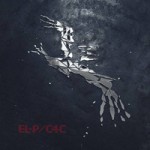 Rapper/producer Jaime Meline, aka El-Producto, nee El-P, puts out an album every five years. As a result, he makes them count. After amicably splitting with the excellent 90s troupe Company Flow and producing Cannibal Ox’s apocalyptic post-millennium masterpiece The Cold Vein (2001), El-P’s first two solo outings, Fantastic Damage (2002) and I’ll Sleep When You’re Dead (2007), became the state-of-the-art for underground hip-hop production. El-P’s dense, cyclonic style whips up all the urban ooze and grime from the decaying city streets and smears it across the sky. Lyrically, El-P is also one of the most inventive rappers in the game, blending the dysfunctional fury of Eminem with the speculative dystopias of Philip K. Dick and William S. Burroughs. Because El-P releases work so infrequently, at least when compared with mega-prolific rappers like Lil B and Lil Wayne, there’s always the chance that he’ll slip … big time. Keep in mind that he hasn’t released a solo album since 2007, and much has changed in the world of hip-hop since then. The sounds of the Dirty South permeate the market, and auto-tuning is de rigueur. With Cancer for Cure, an album whose first single is the controversially titled “The Full Retard” (a reference to a dialogue between Robert Downey, Jr. and Ben Stiller in the film Tropic Thunder), El-P proves that he hasn’t lost a step.
Rapper/producer Jaime Meline, aka El-Producto, nee El-P, puts out an album every five years. As a result, he makes them count. After amicably splitting with the excellent 90s troupe Company Flow and producing Cannibal Ox’s apocalyptic post-millennium masterpiece The Cold Vein (2001), El-P’s first two solo outings, Fantastic Damage (2002) and I’ll Sleep When You’re Dead (2007), became the state-of-the-art for underground hip-hop production. El-P’s dense, cyclonic style whips up all the urban ooze and grime from the decaying city streets and smears it across the sky. Lyrically, El-P is also one of the most inventive rappers in the game, blending the dysfunctional fury of Eminem with the speculative dystopias of Philip K. Dick and William S. Burroughs. Because El-P releases work so infrequently, at least when compared with mega-prolific rappers like Lil B and Lil Wayne, there’s always the chance that he’ll slip … big time. Keep in mind that he hasn’t released a solo album since 2007, and much has changed in the world of hip-hop since then. The sounds of the Dirty South permeate the market, and auto-tuning is de rigueur. With Cancer for Cure, an album whose first single is the controversially titled “The Full Retard” (a reference to a dialogue between Robert Downey, Jr. and Ben Stiller in the film Tropic Thunder), El-P proves that he hasn’t lost a step.
The album opens with “Request Denied,” a propulsive production that opens with a croaky sound bite from William S. Burroughs portending future disaster, effectively setting the tone of the record and establishing a waterproof thematic continuity with his first two albums. Unlike most four-and-a-half minute rap songs, El-P isn’t heard rapping until three minutes in, giving singular focus to his menacing beats. This also allows him to introduce his refurbished aesthetic, which is slightly—just slightly—slicker and features the trebly percussive elements found in Dirty South rap. Despite these tweaks, El-P’s sound is still relentlessly dense. Numbers like “Drones Over BKLYN” and “Tougher Colder” are injected with dark humor, as El-P throws in sound effects such as bicycle horns and party blowers atop his stereotypical murky backdrop, generating a carnivalesque scene on par with what the freakiest moments from a Fellini film were it filmed during an air raid drill. Lyrically, El-P’s perpetual paranoia extends to the fear of governmental bureaucratic control, similar to that exemplified in Terry Gilliam’s dystopian masterpiece Brazil (1985). This is best illustrated in “Sign Here,” where the bedroom concept of the “safe word” is eerily placed within the context of police interrogation. It is the most unsettling number on the album.
Cancer for Cure is yet another example of El-P’s singular production style. Over the last fifteen years, no other producer has created soundscapes as visionary, claustrophobic, or intense. This album should place him in the same class as legendary producers Sylvia Robinson, Rick Rubin, The Bomb Squad, the RZA, and Kanye West (though I would maintain he was already standing beside them on this Mt. Rushmore of producers). His challenging work is not simple to digest, though. Because his approach is so relentless and utterly bleak, the listener can get downright exhausted and worn down by the end of this fifty minute song cycle. While a consistently solid listen, Cancer for Cure lacks a dynamite cut on par with “Deep Space 9mm,” “Stepfather Factory,” “Smithereens (Stop Cryin’),” or “Flyentology,” though opener “Request Denied” comes closest. Despite these minor shortcomings, you are unlikely to hear another hip-hop album this good released this year … with the grand exception of Killer Mike’s excellent R.A.P. Music, which El-P produced.
Mount eerie | Clear Moon
Label: P.W. Elverum & Sun
By James Brubaker
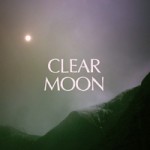 In 2001, when Phil Elverum’s The Microphones released The Glow pt. 2, a legacy defining album that will probably forever be remembered as his masterpiece, I didn’t quite understand what all the fuss was about. The Glow pt. 2 was a fine album, but it seemed kind of boring at first. I held out for a good four or five months before I was otherwise convinced. The convincing was done by a guy I knew, a friend at the time who liked to spend his winter afternoons wandering around our small college town listening to the album on repeat. To hear him speak of Elverum’s masterpiece, the album’s allure wasn’t so much in its songs as its atmosphere. So, I spent most of January and February walking to and from campus listening to The Glow pt. 2, and before long, the album’s dim, distorted corners felt as essential as any other album I’d fallen in love with in the preceding decade. Of course, Elverum’s The Microphones went on to release the audacious and underrated Mount Eerie, and the spotty Live in Japan among a few other odd, little asides before dropping The Microphones tag entirely and re-emerging as Mount Eerie. Since this change, Mount Eerie has released a steady stream of pretty solid but not spectacular albums that affirm Elverum’s approach to making music. The reason I bring up so much context, now, is that Elverum’s latest, Clear Moon, the first in a pair of albums—the second, Ocean Roar will be out in September—is the artist’s strongest work since trading in The Microphones for Mount Eerie. In fact, outside of the exceptional Lost Wisdom, a 2008 collaboration with Julie Doiron, and Fred Squire, Clear Moon surpasses all of Elverum’s work as Mount Eerie.
In 2001, when Phil Elverum’s The Microphones released The Glow pt. 2, a legacy defining album that will probably forever be remembered as his masterpiece, I didn’t quite understand what all the fuss was about. The Glow pt. 2 was a fine album, but it seemed kind of boring at first. I held out for a good four or five months before I was otherwise convinced. The convincing was done by a guy I knew, a friend at the time who liked to spend his winter afternoons wandering around our small college town listening to the album on repeat. To hear him speak of Elverum’s masterpiece, the album’s allure wasn’t so much in its songs as its atmosphere. So, I spent most of January and February walking to and from campus listening to The Glow pt. 2, and before long, the album’s dim, distorted corners felt as essential as any other album I’d fallen in love with in the preceding decade. Of course, Elverum’s The Microphones went on to release the audacious and underrated Mount Eerie, and the spotty Live in Japan among a few other odd, little asides before dropping The Microphones tag entirely and re-emerging as Mount Eerie. Since this change, Mount Eerie has released a steady stream of pretty solid but not spectacular albums that affirm Elverum’s approach to making music. The reason I bring up so much context, now, is that Elverum’s latest, Clear Moon, the first in a pair of albums—the second, Ocean Roar will be out in September—is the artist’s strongest work since trading in The Microphones for Mount Eerie. In fact, outside of the exceptional Lost Wisdom, a 2008 collaboration with Julie Doiron, and Fred Squire, Clear Moon surpasses all of Elverum’s work as Mount Eerie.
Part of what has kept Mount Eerie from reaching the heights Elverum has proven himself capable of achieving has been an almost paralyzed sense of atmosphere—that is to say, Elverum’s albums as Mount Eerie have been so intent on maintaining a sparse fragility that the song structures and dynamics are flat, that each song is wrapped up in so much navel-gazing that that overall atmosphere becomes oppressive and exhausting. This is not the case with Clear Moon, an album that finds Elverum’s compositions moving more, and becoming spacious in ways different from previous Mount Eerie releases.
The album’s stunning opening track, “Through the Trees pt. 2,” is a perfect example of the subtle but necessary shifts Elverum has made with Clear Moon—the song is rooted in an acoustic guitar figure, but the song is downright catchy (by Elverum’s standards), and the addition of backing vocals, which accentuate the strong, resonant melody, give the song an openness that is as inviting as the song’s lyrical content (“I meant all my songs not as a picture of the woods/but just to remind myself/that I briefly live”) is devastating. Elsehwere, Elverum builds songs around drones (“The Place Lives”), tense atmospherics and walking bass lines (“Lone Bell”), off-kilter guitar vamps (“House Shape”) and sludgy guitars mixed with ethereal vocals (“Over Dark Water”) to create an album as invested in its songs as its atmosphere. This combination of strong songwriting, ambitious arrangements (“Clear Moon” works as a culmination of all the album’s elements—a masterful opus of drones and choral vocals that recalls The Microphones Mount Eerie record) and heavy atmosphere make Clear Moon an intensely rewarding album that practically begs listeners to lose themselves in its expansive aural settings.
To discuss Clear Moon in terms of setting makes good sense in light of Elverum’s description of the album on the P.W. Elverum and Sun website: “…exploring a living place as a modern questioning person, walking around and looking at things for 80 or so years before disbanding back into dirt.” Clear Moon is an album about place, and while the lyrics certainly speak to that theme, the arrangements and production are just as instrumental in developing the sense of place at the album’s heart. Ultimately, Clear Moon is a thrilling album, not just because it finds Elverum reaching for a higher bar after a string of largely good, but not spectacular albums, but because in doing so, Mount Eerie has achieved something exciting thanks to the album’s thematic cohesion and sense of adventure—everything Elverum’s fans enjoy about his work is present on Clear Moon, but this time, those elements are focused into a more dynamic and ambitious collection of songs.
Sun Kil Moon | Among the Leaves
Label: Caldo Verde
By Joshua Cross
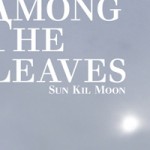 Mark Kozelek is no stranger to long albums. Red House Painters and Sun Kil Moon have both produced plenty of albums that stretch the one-hour mark. Unlike those previous releases, which relied on much longer songs, Among the Leaves, Sun Kil Moon’s fifth studio album, features seventeen tracks, most of them in the more traditional two- to five-minute range. For fans of Kozelek’s previous work, these shorter tracks can seem clipped or under-developed without the room to explore that many of his best songs were afforded.
Mark Kozelek is no stranger to long albums. Red House Painters and Sun Kil Moon have both produced plenty of albums that stretch the one-hour mark. Unlike those previous releases, which relied on much longer songs, Among the Leaves, Sun Kil Moon’s fifth studio album, features seventeen tracks, most of them in the more traditional two- to five-minute range. For fans of Kozelek’s previous work, these shorter tracks can seem clipped or under-developed without the room to explore that many of his best songs were afforded.
While most of the songs are shorter, Kozelek seems to be more at ease and more confessional on Among the Leaves than he has in the past. Songs like “I Know It’s Pathetic” and “Richard Collopy” are written from the point of view of a singer-songwriter, ostensibly Kozelek or some version of him. “That Bird Has a Broken Wing”—for me the standout track on the album, with its darkly Americana feel, arpeggio picking, and rolling vocals—poses the question “what kind of man travels and sings?” and many of the tracks attempt to answer this question.
“Sunshine in Chicago” finds an aging musician about to play at a Chicago venue where his band played in the 90s when they had “lots of female fans, and fuck they all were cute.” Now the graying songwriter “just sign[s] posters for guys in tennis shoes.” He may wake up with a back that “fucking hurts,” but at least there is “no itching or burning” from nights with those cute female fans. While Kozelek is beginning to feel the effects of his 45 years, he approaches his status as an aging musician with witty self-deprecation.
“Track Number 8” answers this same question in a much darker way by describing the hardships of writing songs, of beating them to death without ever feeling like he gets them right. “Songwriting’s lonely, songwriting hurts,” he sings, “songwriting costs, it doesn’t come free.” For proof, he lists several songwriters whose art cost them everything: Elliott Smith, Richie Lee, and Mark Linkous, all of whom committed suicide, and Shannon Hoon, who overdosed. Songwriting, Kozelek says, does not just cost a lot, but it is “a chore,” which is why most albums have only ten tracks. Except for this one, which has seventeen, so it must not have been such a chore this time.
In terms of sound, Among the Leaves is closest to Admiral Fell Promises, the last Sun Kil Moon LP. On most of these songs, Kozelek chooses the nylon-string guitar that took center stage alone on Admiral. The few tracks that feature additional musicians find them playing upright basses, bells, and quiet brushes on the drums, giving the album a coffee house vibe. “King Fish” does break from this open mic routine and bring in a full band and electric guitars, which creates a sound closer to Ghosts of Great Highway or April. But “King Fish” is far from “Carry Me Ohio” or “Tonight the Sky,” the two songs I most immediately associate with Sun Kil Moon. While Leaves contains the beautiful melodies and guitar work that we expect on Sun Kil Moon releases, the urgent tensions and melancholy from those earlier albums seems missing. While Leaves may prove more memorable than Admiral, ultimately it falls short of Kozelek’s best work.
La Sera | La Sera Sees the Light
Label: Hardly Art Records
By Brian Flota
 It’s surprising how good La Sera Sees the Light really is. I don’t say this because I didn’t think the Vivian Girls bassist “Kickball” Katy Goodman was capable of making a better album than La Sera’s self-titled debut (2011). I say this because of the ways it is different from its predecessor. Goodman’s “side-project” La Sera (which was essentially a set of songs composed and sung by her with all the instrumental duties handled by Brady Hall) delivered a pleasant debut album, one that stripped the punk rock gusto of the Vivs from their sound, focusing instead on their girl pop, surf-rock, and shoegazer elements. While quite tuneful, the album’s twelve tracks barely cross the twenty-five minute mark, more closely resemble professionally recorded demos than complete songs.
It’s surprising how good La Sera Sees the Light really is. I don’t say this because I didn’t think the Vivian Girls bassist “Kickball” Katy Goodman was capable of making a better album than La Sera’s self-titled debut (2011). I say this because of the ways it is different from its predecessor. Goodman’s “side-project” La Sera (which was essentially a set of songs composed and sung by her with all the instrumental duties handled by Brady Hall) delivered a pleasant debut album, one that stripped the punk rock gusto of the Vivs from their sound, focusing instead on their girl pop, surf-rock, and shoegazer elements. While quite tuneful, the album’s twelve tracks barely cross the twenty-five minute mark, more closely resemble professionally recorded demos than complete songs.
With La Sera Sees the Light, Goodman becomes a fully-fledged band leader, something she is not in the Vivian Girls (which is ostensibly Cassie Ramone’s group). She once again writes all the songs. But this time she contributes her own bass playing to each track (and performs lead guitar duties on “How Far We’ve Come Now”). She is backed by Rob Barbato on guitar and Dan Allare on drums. Not only does the band she has assembled for the album rock, they are tight and play confidently in a variety of styles. The opener instantly alerts the listener that this is not a repeat of the first La Sera LP, and it is definitely not to be confused with the Vivian Girls. “Love That’s Gone” is a dirge-like country-rock number that owes more to Neko Case and Jenny Lewis than, say, The Wipers. Next comes the album’s first single, “Please Be My Third Eye,” a driving rocker that marks a one-hundred-eighty degree tonal shift from the previous track. Its combination of a punk rock sensibility and psychedelic sunshine pop yields one of the year’s best singles to date. “Break My Heart” continues in this vein, and though we are not even halfway through the album, it becomes clear that La Sera is no side project. It is conceivable that Goodman’s group will surpass the popularity of her sister act, the Vivian Girls. Sees the Light is slicker, more polished, more deliberate, more sonically diverse. The second half of the album features more countrified ballads and gentler pop numbers like “I’m Alone” and “Real Boy.” “Drive On” is the darkest song on the set, a haunting revision of 1990s Jesus and Mary Chain. It is followed by another tonally different tune in “How Far We’ve Come Now,” a sludgy number anchored by Goodman’s lovely vocal harmonies.
The record’s variety, combined with Goodman’s ability to distinguish herself as a band leader, more than atone for the relative lack of fresh ideas found on the record. But that’s not really a concern, as Goodman is far more interested in singing and writing good, solid tunes than she is in developing an inventively fresh sonic palette. One thing that surprised me about the album as I listened to it the first several times was how long it took me to get used to Goodman’s voice. In the Vivian Girls, she contributes tight, soothing vocal harmonies, and she duplicates this on the first La Sera album, where she stacks her vocals harmonies in disorienting, practically ambient ways. On this album, however, her voice is largely unadorned. While her trademark vocal harmonies are present, they are sparsely integrated into the album and not a primary feature. Her voice is lovely, no doubt, but it doesn’t carry that much dramatic or emotional heft at this point. Judging by the qualitative musical leaps made between La Sera’s first album and this one, I would imagine that her already pleasant voice will be a beast by the next go ’round.
Death Grips | The Money Store
Label: Epic
By James Brubaker
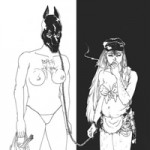 When Death Grips dropped Exmillitary last year, the results were promising, if a bit uneven. The album was daring in its use of aggressive production and rhymes, but at times the songs came close to consuming themselves with their too loud, too dense, sonic violence. Upon seeing the cover for Death Grips’ latest, The Money Store—a raw sketch of a couple of S & M folks—I suspected this new album might face the same problems. I was wrong. On The Money Store, Death Grips have focused their rough edges into a collection of abrasive aggro-hip hop that is as satisfying as it is unnerving.
When Death Grips dropped Exmillitary last year, the results were promising, if a bit uneven. The album was daring in its use of aggressive production and rhymes, but at times the songs came close to consuming themselves with their too loud, too dense, sonic violence. Upon seeing the cover for Death Grips’ latest, The Money Store—a raw sketch of a couple of S & M folks—I suspected this new album might face the same problems. I was wrong. On The Money Store, Death Grips have focused their rough edges into a collection of abrasive aggro-hip hop that is as satisfying as it is unnerving.
Part of what makes The Money Store so compelling is the album’s clarity of vision. The Money Store is full of strong hooks (check out the opening riff of “I’ve Seen Footage,” or the batshit-synths that open “The Cage”), but those hooks are only successful because of the wild shifts and apocalyptic soundscapes that frame the vocal delivery. In a word, The Money Store thrives on its own wildness—the engine that drive these songs, and ultimately the album, is similar to the impulse that informs dancehall mash-ups. Take a song like “Punk Weight”—the track opens with a sped up sample, segues into a slowed down sample, then explodes into a skittery mess of percussive bass hits and klaxon-like synth bursts, starting and stopping itself into an odd sense of vertigo. As such, The Money Store feels nervous, paranoid, and more than anything, pissed as hell.
It is important that the album conveys these themes so well sonically as, after spending a few weeks with the album, the lyrics are still difficult to discern, apart from the occasional declaration of “fuck that,” (on “Fuck That,”) or the maybe-threats-and/or-boasts that run through the mind-bogglingly ecstatic “System Blower.” I could take a look at the lyric sheet, but what’s the point—these songs are felt more than thought. What is important, here, is the lyrical delivery and how it fits within the context of the songs—the vocals are another layer in each song’s boundary-crashing arrangements, and the results are incendiary no matter what Stefan Burnett is rhyming about. In essence, Death Grips could be spouting grocery lists, and these songs would still feel as if they were raging against a machine (more effectively, I might add, than Rage Against the Machine ever did).
With The Money Store, Death Grips prove that they are a force to be reckoned with. In a hip hop scene largely defined by the big money all stars, and in which the highest profile purveyor of transgressive content is a snot-nosed group of kids who get their kicks rhyming about rape and murder (I’m looking at you, OFWGKTA), Death Grips aren’t just impressive, they seem downright necessary. With the growth between Exmillitary and The Money Store, Death Grips have arrived at some next-level shit—now let’s hope the rest of the genre takes note and adjusts its game accordingly.
George Harrison | Early Takes: Volume 1
Label: UME Records (Universal)
By Brian Flota
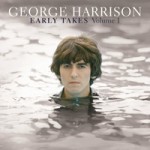 Released in conjunction with Martin Scorsese’s 2011 documentary Living in the Material World, George Harrison’s Early Takes: Volume 1 is a collection of demos and early takes spanning from roughly the time of All Things Must Pass (1970) to 33 1/3 (1976). Sets like this have very little replay value because, clearly, these recordings were not originally intended to be released to the public. However, music fans, especially the kind that buy box sets loaded with previously unreleased tracks and bootlegs, have proved time and time again that there is a market for this kind of material. Why? By getting a glimpse into the recording process of our favorite artists, we often feel a stronger connection with the music, be it in the form of a rough demo, a finished track, or one that was abandoned because of pressure from the record company. Maybe the artist disliked it, not able to see why others might like it. Whatever the case may be, a release like this is only going to appeal to the most hardcore of the fan base—and Early Takes: Volume 1 is no exception.
Released in conjunction with Martin Scorsese’s 2011 documentary Living in the Material World, George Harrison’s Early Takes: Volume 1 is a collection of demos and early takes spanning from roughly the time of All Things Must Pass (1970) to 33 1/3 (1976). Sets like this have very little replay value because, clearly, these recordings were not originally intended to be released to the public. However, music fans, especially the kind that buy box sets loaded with previously unreleased tracks and bootlegs, have proved time and time again that there is a market for this kind of material. Why? By getting a glimpse into the recording process of our favorite artists, we often feel a stronger connection with the music, be it in the form of a rough demo, a finished track, or one that was abandoned because of pressure from the record company. Maybe the artist disliked it, not able to see why others might like it. Whatever the case may be, a release like this is only going to appeal to the most hardcore of the fan base—and Early Takes: Volume 1 is no exception.
Now that that caveat is out of the way, we can discuss the “material world” of this collection of Harrison tracks, both well-known and obscure. Not surprisingly, most of the material (six of the ten tracks on the album) originally appeared on Harrison’s best album, All Things Must Pass (1970). These demos and takes are probably the least interesting on here because they are so familiar to those who are fans of Harrison’s work. None of them come close to equaling the power of the final versions from the monumental three-LP set. Instead of offering a revealing look at his compositional process, these tracks do not sound all that different from the album versions (except for the fact that they lack Phil Spector’s wall-of-sound touch which, let’s be honest, really bolsters the tracks on it). And when compared with the two late solo demos that appeared on The Beatles’ Anthology 3 (1996), “Something” and “All Things Must Pass,” nothing on the album matches the emotional intensity and sincerity of those recordings. The remaining tracks have the most to offer because of our general unfamiliarity with them. The jaunty “Woman Don’t You Cry for Me” (from 33 1/3) is superior to the finished version. His cover of the pop standard “Let it Be Me,” though down-tempo, is carefully and earnestly delivered. The two Dylan numbers, ATMP‘s “I’d Have You Any Time” (which Harrison co-wrote) and the then-obscure folk-era number “Mama You’ve Been On My Mind,” are also insightful, but lack the fully committed vocal delivery found on Bob Dylan’s own demos of these songs. The album closes with a number from Living in the Material World (1973), “The Light that Has Lighted the World.” This acoustic demo is the highlight of the set because of Harrison’s fluid acoustic guitar playing and the maudlin, almost disappointed emotional quality of his vocals. Though a somber way to end the set, it does exemplify why so many listeners claim that George Harrison is their favorite (ex-) Beatle. George Harrison and Beatles fans in general will find plenty to like here, but I can’t help but feeling like this album is a missed opportunity. The fact that there are no substantive liner notes (except for songwriting credits and copyright information) with this release makes it all the more frustrating. Maybe the really good stuff will appear on Volume 2!
Best Coast | The Only Place
Label: Mexican Summer
By James Brubaker
 When Best Coast released their debut LP, Crazy for You, in 2010, I was immediately impressed. The songs on that album combined pure pop simplicity with mid-fi production and a raw, obsessive urgency that seemed to be commenting on romantic pop song tropes while simultaneously becoming those tropes. When Bethany Cosentino sang about co-dependency on “Crazy for You,” and “Goodbye,” or romantic obsession on “I Want To,” or boredom, drugs, or school throughout the rest of the album, the songs were shot through with an almost disturbing pathos—Cosentino was posing as a retro-ish pop star, but there was something dark and unstable lurking in the music. On Best Coast’s latest, The Only Place, that pathos has largely been abandoned, leaving in its wake a tepid, conventional selection of retro-ish guitar pop that not only disappoints in its banality, but has me retroactively questioning my enthusiasm for its predecessor.
When Best Coast released their debut LP, Crazy for You, in 2010, I was immediately impressed. The songs on that album combined pure pop simplicity with mid-fi production and a raw, obsessive urgency that seemed to be commenting on romantic pop song tropes while simultaneously becoming those tropes. When Bethany Cosentino sang about co-dependency on “Crazy for You,” and “Goodbye,” or romantic obsession on “I Want To,” or boredom, drugs, or school throughout the rest of the album, the songs were shot through with an almost disturbing pathos—Cosentino was posing as a retro-ish pop star, but there was something dark and unstable lurking in the music. On Best Coast’s latest, The Only Place, that pathos has largely been abandoned, leaving in its wake a tepid, conventional selection of retro-ish guitar pop that not only disappoints in its banality, but has me retroactively questioning my enthusiasm for its predecessor.
The album-opening title track is catchy and bright, but its lyrics, a cliché-drenched celebration of California (“We wake up with the sun in our eyes,”), full of trite, dull endorsements (“We always have fun”) that culminates with an awful chorus that includes the lyrics “We’ve got the ocean, got the babes, got the sun, we’ve got the waves/This is the only place for me.” It’s a fine sentiment for a pop song, and recalls some of the great early sixties beach songs, to a point. The problem with “The Only Place” is that it feels more like a promotional song for California than the vibrant expression of youth that was at the heart of all of those early sixties beach songs—The Beach Boys were restless, getting “bugged driving up and down the same old strip,” while Cosentino just, like, likes the sun? And the waves. And the babes. And things?
When Cosentino does try to capture the drama of youth, the results are dull, at best, and outright forced at their worst. “How They Want to Be,” is a straightforward expression of not wanting to conform to expectations, played out over an almost unnoticeable backing track. Album closer “Up All Night,” with its we’re-from-opposite-sides-of-the-tracks narrative and fifties prom, slow dance arrangement feels utterly contrived. In these songs we see the problems that pervade The Only Place—the arrangements and production are bland and Cosentino’s forced lyrics (and admittedly strong voice) are pushed to the fore. The tension of the loud, raw arrangements and dark lyrics that gave Crazy For You its raw energy have been replaced by clean and straightforward song craft that isn’t always bad, but pales in comparison to Best Coast’s first album.
After immersing myself in The Only Place for a couple of weeks, I was honestly worried that the album might actually taint its predecessor. I was concerned that the lack of urgency and pathos on The Only Place might retroactively make Crazy for You feel like an accident, an album into which I read too much, assigned too much credit where credit wasn’t due. I am relieved to say that, after revisiting it in the lead up to writing this review, Crazy For You is still a great album. Unfortunately, The Only Place is not.
